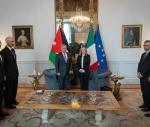You are here
Public vs. private 2014
Jun 08,2014 - Last updated at Jun 08,2014
According to recent data, there are 6,355 schools in Jordan teaching over 1.7 million students and employing almost 84,000 teachers.
Of these, 2,138 are private, with a student population of 425,000, or one fourth of students in Jordan.
Some 33 of the schools offer the IGCSE/GCE/GCSE curriculum and nine offer the IB programme.
It is established that private schools in Jordan offer a superior type of education to that offered in public schools.
Private schools also charge tuition levels that are manifold the per capita income. Is the cost justified?
Jordanians are big spenders on education. Take for example the average of JD14,000 charged per child per year at a top private school in a country where the per capita income is JD3,650.
Some parents even send their children to schools abroad, at much higher costs, even though the level of learning at some of the top schools in Jordan is comparable to that in the best of the world — I believe some of it is conspicuous consumption (keeping up with the Joneses).
Of course, when it comes to one’s child, rationality is secondary, as one seeks the best for one’s child, almost at any cost.
Yet parents view the high cost of educating their children at elite schools as a guarantee that the children will make it in life, which is doubtful.
A better learning environment at school is of course a positive factor contributing to the child’s growth and development, but it is not everything.
It also contributes positively towards one’s earning potential, which is an established fact. However, parents also have to play a role and contribute towards the development of their child, and that cannot be supplanted by any school.
In other words, unlike what some parents may think, having one’s children in an expensive school does not mean that they should not spend long loving hours nurturing and enhancing the child’s development.
I recently attended a business plan competition for 10th graders from several public and private schools.
One expected the business plans of students in private schools to win over those of students from public schools, but, to the contrary, a team from a public school had the better project idea, presentation and even prototype, which was made from cardboard and basic materials to demonstrate the brilliant idea.
The team from the public school had success written all over it. Free education proved to be not so bad when coupled with teachers and parents that cared and offered their best.
The message that I came back with from the competition was that while private schools do have a better learning environment, willpower, motivation, loving, caring and supportive teachers can make up for the material deficit.
And, a learning environment will not compensate for a careless one at home.













